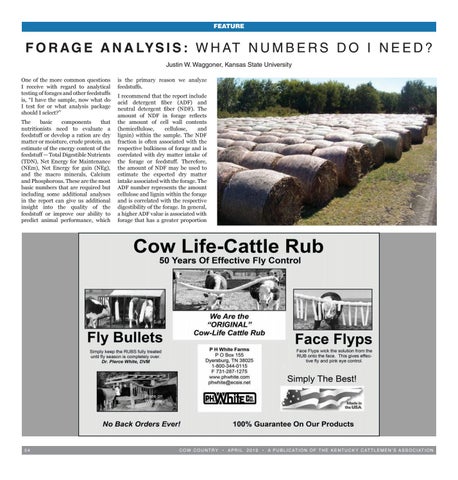FEATURE
F O R A G E A N A LY S I S : W H AT N U M B E R S D O I N E E D ? Justin W. Waggoner, Kansas State University One of the more common questions I receive with regard to analytical testing of forages and other feedstuffs is, “I have the sample, now what do I test for or what analysis package should I select?” The basic components that nutritionists need to evaluate a feedstuff or develop a ration are dry matter or moisture, crude protein, an estimate of the energy content of the feedstuff — Total Digestible Nutrients (TDN), Net Energy for Maintenance (NEm), Net Energy for gain (NEg), and the macro minerals, Calcium and Phosphorous. These are the most basic numbers that are required but including some additional analyses in the report can give us additional insight into the quality of the feedstuff or improve our ability to predict animal performance, which
54
is the primary reason we analyze feedstuffs. I recommend that the report include acid detergent fiber (ADF) and neutral detergent fiber (NDF). The amount of NDF in forage reflects the amount of cell wall contents (hemicellulose, cellulose, and lignin) within the sample. The NDF fraction is often associated with the respective bulkiness of forage and is correlated with dry matter intake of the forage or feedstuff. Therefore, the amount of NDF may be used to estimate the expected dry matter intake associated with the forage. The ADF number represents the amount cellulose and lignin within the forage and is correlated with the respective digestibility of the forage. In general, a higher ADF value is associated with forage that has a greater proportion
COW COUNTRY • APRIL 2019
• A P U B L I C AT I O N O F T H E K E N T U C K Y C AT T L E M E N ’ S A S S O C I AT I O N
